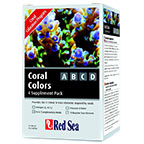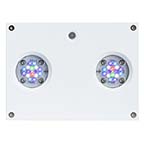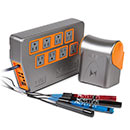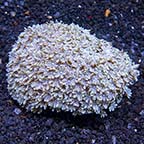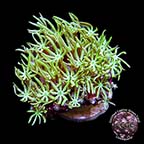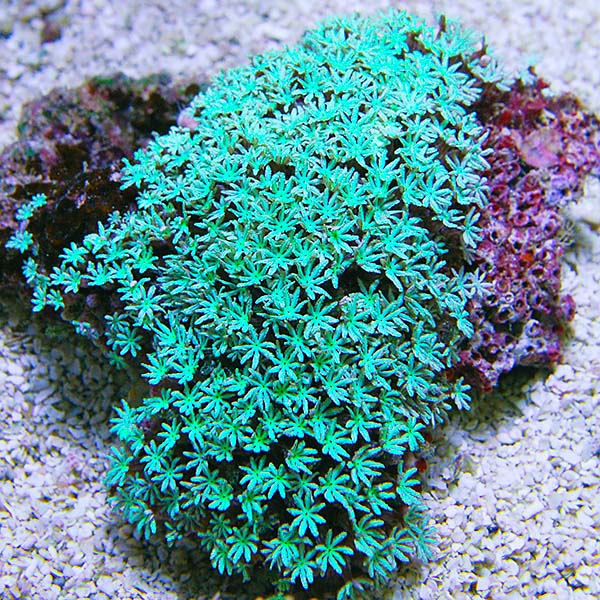
Additional locales and sizes may be available!
Additional locales and sizes may be available! Email me when availableQuick Stats
What do these Quick Stats mean? Click here for more information
What do these Quick Stats mean? Click here for more information
Overview
The Green Pipe Organ Coral is an exceptional color variety of the Pipe Organ Coral exhibiting a vibrant jade-green coloration. Pipe Organ Corals are soft corals but are often referred to as hard corals because they produce external calcareous skeletons that are red in coloration. Common names for Pipe Organ Corals may include Organ Pipe Coral, Mat Polyp, or Daisy Coral. When their polyps are open, Pipe Organ Corals are often easily confused with Star Polyp Corals or Clove Polyp Corals because of their similar appearance. However, unlike the aforementioned doppelgangers, Pipe Organ Corals have tight, "well behaved" growth habits and will not spread aggressively across the rocks and potentially crowd neighboring corals.
The ideal environment for the Green Pipe Organ Coral is an established reef aquarium with coral-friendly fish and invertebrates. The Green Pipe Organ Coral is safe to place near other peaceful corals as it lacks sweeper tentacles that can potentially damage other corals with which it may come into contact. Once established, the Green Pipe Organ Coral provides a fantastic living tapestry of color and movement ideal for softening the rough edges of rockwork or filling empty reef aquarium landscapes.
The Green Pipe Organ Coral Pack will thrive under moderate to high lighting conditions achieved by T-5 fluorescent, powerful LED, or the more intense metal halide light fixtures. While not as demanding as small polyp stony (SPS) corals, it is still imperative to maintain high water quality for the Green Pipe Organ Coral ensuring proper pH, alkalinity and calcium levels, while keeping phosphate and nitrate levels as close to zero as possible.
Along with proper lighting and water quality, the Green Pipe Organ Coral will thrive when provided medium, intermittent water flow within the aquarium. This can be easily achieved with the addition of powerheads, wavemakers, or water circulation pumps. Proper water movement is especially important for the Green Pipe Organ Coral as it plays a vital role in preventing detritus and nuisance algae from settling and overwhelming the coral. Keep in mind that the Green Pipe Organ Coral is fragile so be sure to avoid locating the coral in direct currents where it could be displaced and damaged.
Though the Green Pipe Organ Coral hosts symbiotic photosynthetic zooxanthellae algae to help satisfy a major portion of its nutritional requirements, the Green Pipe Organ Coral will benefit from supplemental weekly feedings of micro-plankton and other foods designed for filter-feeding invertebrates especially when housed in reef aquariums that do not contain fishes. For continued good health, the Green Pipe Organ Coral will also require the addition of iodine, strontium, and other trace elements to the water.
Approximate Purchase Size: Tiny: 1" to 1-3/4"; Small: 1-3/4" to 2-1/4"; Medium: 2" to 4-1/4"; Large: 4" to 5"




